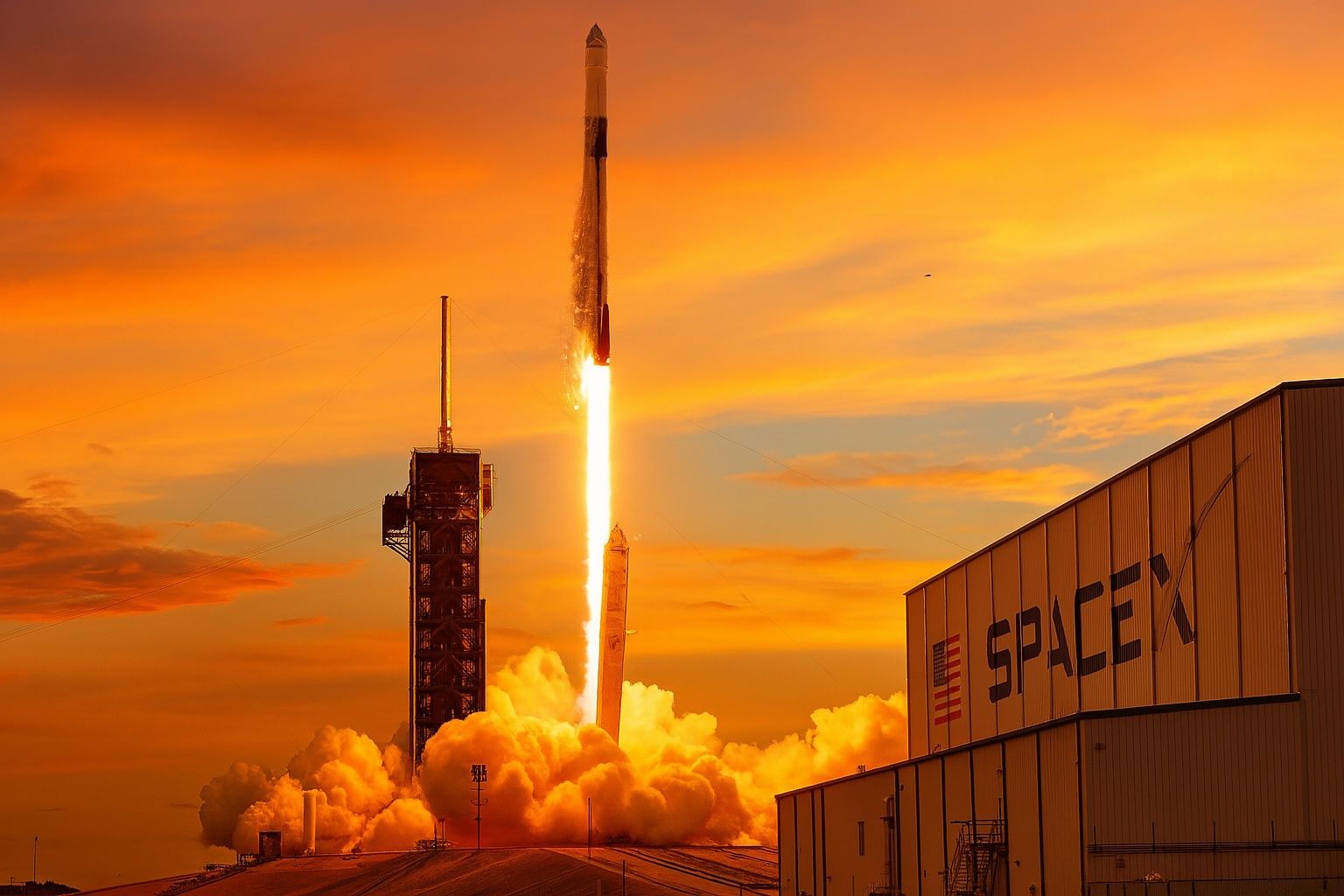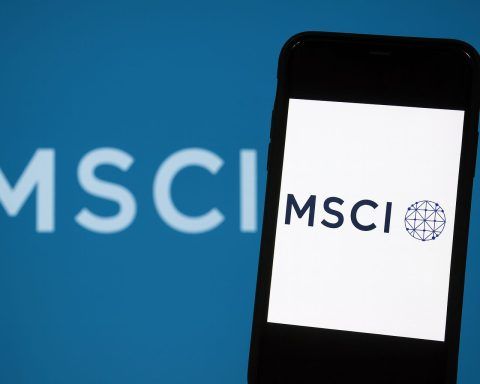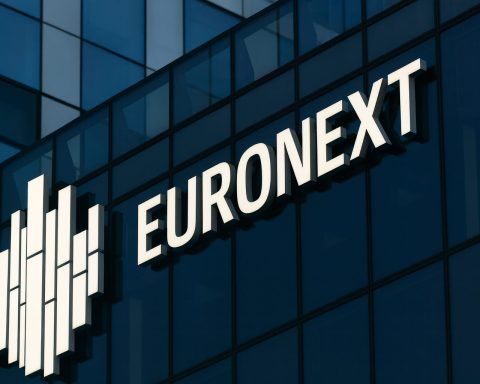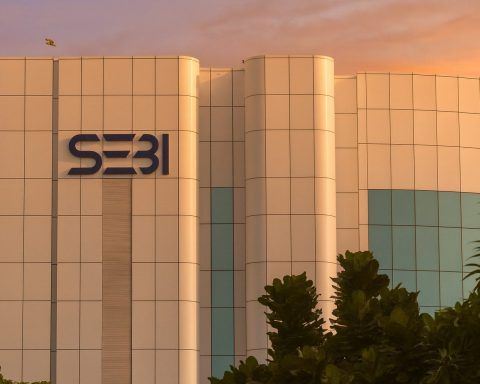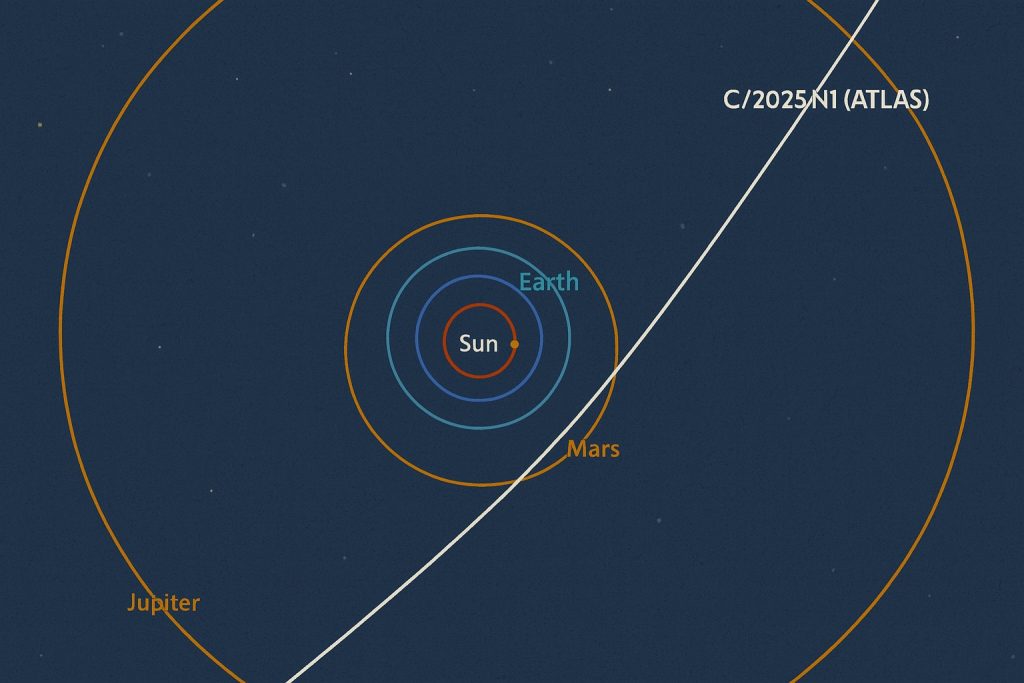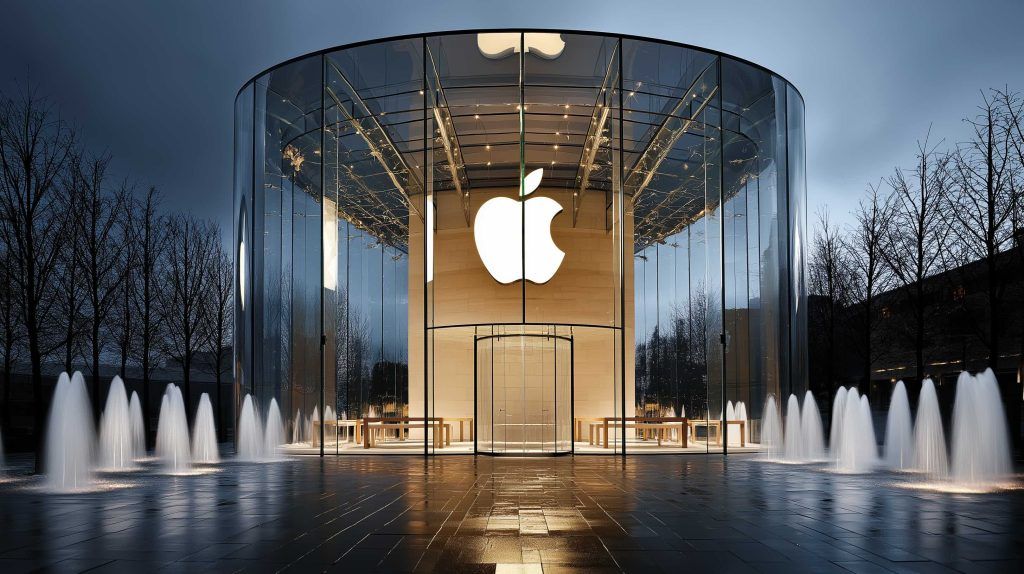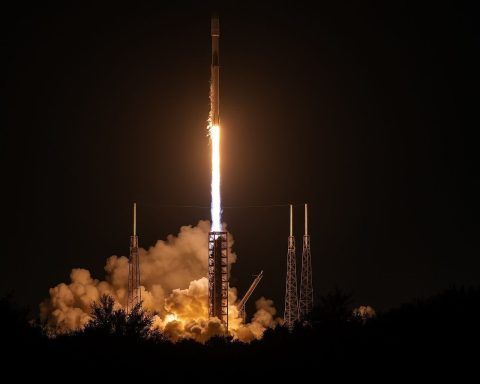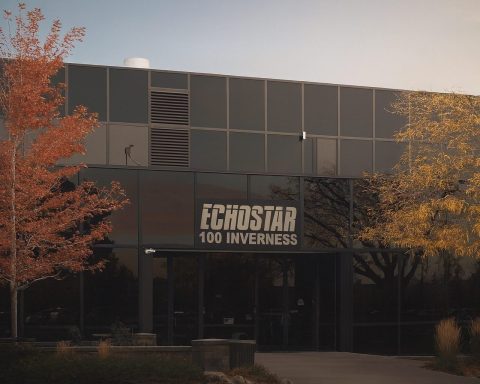- NASA astronauts Zena Cardman, Mike Fincke, Kimiya Yui, and Oleg Platonov launched aboard SpaceX’s Falcon 9 with nine Merlin engines from Kennedy Space Center at 11:43 a.m. EDT on August 1, 2025, on the Crew Dragon Endeavour for NASA’s Crew-11 mission.
- The Crew-11 Dragon capsule separated from the Falcon 9’s second stage less than 10 minutes after liftoff.
- Endeavour docked with the ISS Harmony module around 3:00 a.m. EDT on August 2, 2025, after a roughly 16-hour transit.
- NASA indicated Crew-11 may stay on the ISS for eight months instead of the standard six months to better align with Russia’s schedule.
- A delegation from Russia’s Roscosmos attended the Florida launch attempt, marking the first in-person NASA-Roscosmos meeting since 2018.
- Late July 31, 2025, Starship conducted a single-engine static-fire test at Starbase Boca Chica, firing one of six Raptor engines for an in-space burn.
- Starship Flight 10 is planned to launch in August 2025 after a replacement Ship was rolled out following the June 18 explosion of the original Ship.
- The FAA approved May 2025 license modifications allowing up to 25 Starship launches per year from Starbase, though Flight 10 requires closing the Flight 8 mishap investigation and a return-to-flight nod.
- As of August 1, 2025, Starlink satellites in orbit numbered 8,094 with about 8,075 operational, and the newer V2 Mini satellites are nearly three times heavier than earlier versions.
- Starlink is pursuing a megaconstellation of up to 42,000 satellites to blanket the planet, while regulators and astronomers warn about night-sky brightness, orbital debris risk, and potential climate effects.
SpaceX packed a whirlwind of headline-grabbing developments into the first two days of August 2025. From a triumphant crewed launch dodging storm clouds, to a fiery Starship engine test in Texas, to new milestones (and concerns) for the ever-growing Starlink satellite network – here’s your comprehensive roundup of everything SpaceX in the past 48 hours.
Crew-11 Rockets to the ISS in Record Time
Astronaut Launch: After a one-day weather delay, SpaceX successfully launched NASA’s Crew-11 mission on Friday, August 1. Nine Merlin engines thundered at 11:43 a.m. EDT (15:43 UTC) from Kennedy Space Center, as the Falcon 9 rocket “threaded the clouds” and lifted Crew Dragon Endeavour into orbit [1]. On board were four crew members: NASA astronauts Zena Cardman and Mike Fincke, JAXA astronaut Kimiya Yui, and Roscosmos cosmonaut Oleg Platonov, all embarking on a long-duration stay at the International Space Station (ISS) [2]. Despite gloomy Florida weather, the team beat the odds to blast off on schedule [3], with the Dragon capsule separating cleanly from the second stage less than 10 minutes after liftoff [4].
Astronaut Reactions: The Crew-11 astronauts shared their excitement upon reaching orbit. “I have no emotions but joy right now. That was absolutely transcendent, the ride of a lifetime,” Commander Zena Cardman radioed after experiencing microgravity for the first time [5]. Seasoned astronaut Mike Fincke, returning to space after 14 years, added, “Boy, it’s great to be back in orbit again! … What a ride! And Zena and Oleg, let me be the second to welcome you to your first orbit around beautiful planet Earth” [6]. Their crewmates Yui and Platonov are also veterans of spaceflight or training – notably, Platonov is making his first trip to orbit after previously serving as a Soyuz backup [7] [8].
ISS Arrival & Extended Mission: The autonomous rendezvous was brisk. After a roughly 16-hour transit, Endeavour was set to dock with the ISS’s Harmony module around 3:00 a.m. EDT on Saturday, Aug. 2 [9], meaning the crew reached their destination in just about 15 hours – one of the shortest crew transit times to the station [10]. This mission also marks a potential shift in crew rotation duration. While six months is the standard ISS tour, NASA indicated Crew-11 may stay up to eight months, testing an extended mission to better sync with Russia’s schedule [11]. (NASA will monitor the Dragon capsule’s health in orbit before fully committing to the eight-month stint [12].) If all goes well, Crew-11 could be the first to adopt this longer rotation, heralding closer international coordination on crew handovers. In fact, the launch itself fostered international cooperation on the ground: a delegation from Russia’s Roscosmos attended the Florida launch attempt, marking the first in-person meeting between NASA and Roscosmos chiefs since 2018 [13]. No new agreements were made, but both sides discussed ongoing ISS operations and lunar cooperation amid otherwise chilly U.S.-Russia relations [14] – a reminder that SpaceX’s flights are now a linchpin of global space partnership.
Starship Fires Up Engines for Next Test Flight
Static Fire Test in Texas: Down in Boca Chica, Texas, Starship made news of its own. Late on July 31 (Thursday), SpaceX conducted a dramatic static-fire test of its newest Starship upper-stage prototype, torching one of the ship’s six Raptor engines for a brief “in-space burn” simulation [15]. “Starship single-engine static fire demonstrating an in-space burn complete on Pad 1 at Starbase,” SpaceX confirmed in an X (Twitter) post with striking photos of the engine firing [16]. The test, reported on August 1, is a key step in readying Starship’s 10th flight – the next big orbital test of SpaceX’s 394-foot reusable mega-rocket [17].
Context and Next Steps: This particular Starship vehicle is actually a replacement: the original Ship slated for the 10th flight exploded on a test stand on June 18 during a pre-launch check [18]. SpaceX quickly rolled out a new Ship, and engineers already cleared its partner booster (Super Heavy) in a full 33-engine static fire back on June 6 [19]. With both stages now tested, SpaceX founder Elon Musk has boldly stated that Starship’s Flight 10 will launch “in August” [20]. That timeline suggests a liftoff in the coming weeks, pending final regulatory green lights. The U.S. Federal Aviation Administration had approved key license modifications in May to allow up to 25 Starship launches per year from Starbase [21], but Starship Flight 10 can only proceed once the FAA formally closes the Flight 8 mishap investigation and grants a return-to-flight nod [22]. If clearance comes, August could see Starship take to the skies again – potentially the first Starship test of 2025 to aim for a fully successful orbital journey. (Starship has flown three test missions earlier this year – in January, March, and May – each reaching space but losing its upper stage before planned splashdown [23].) SpaceX is eager to finally nail a complete flight, as Starship is central to plans ranging from Mars colonization to NASA’s Artemis Moon landings.
Starlink Mega-Constellation: Milestones and Concerns
Network Growth: In orbit above, SpaceX’s Starlink satellite internet constellation continues its explosive growth. As of August 1, 2025, there are an astonishing 8,094 Starlink satellites orbiting Earth (about 8,075 of them currently operational) [24]. This figure – tracked by astronomer Jonathan McDowell – underscores how rapidly SpaceX is populating low Earth orbit with its broadband relay stations. The latest generation “V2 Mini” Starlink satellites are nearly three times heavier than the earlier version, packing more capability per unit [25]. And SpaceX is nowhere near done: the company ultimately envisions a megaconstellation of up to 42,000 satellites to blanket the planet in coverage [26]. In just a few years, Starlink has gone from proposal to thousands of spacecraft launched, enabling high-speed internet in remote areas across dozens of countries. (Notably, Starlink just gained regulatory clearance in India in July and inked partnerships to expand service there, signaling more growth on the horizon.)
Debate Over Impact: Yet Starlink’s scale is raising red flags among experts. Astronomers have long worried about the night-sky pollution caused by bright satellite trains photobombing telescope observations. Now orbital debris and safety specialists are voicing alarms as well. With so many Starlinks on orbit, spaceflight safety experts say the network is the number-one source of collision risk in Earth orbit [27]. Each satellite has a planned five-year lifespan, after which it is deorbited – and scientists caution that hundreds of tons of metal re-entering the atmosphere annually (as old satellites burn up) could have unpredictable effects on Earth’s upper atmosphere and climate [28]. SpaceX has taken steps to mitigate issues (such as adding sunshades to reduce brightness and improving debris avoidance systems), but the sheer numbers are unprecedented. As Starlink grows, regulators and the global space community are paying close attention. The U.S. FCC, for instance, updated its rules to ensure new megaconstellation entrants don’t overly interfere with incumbents like Starlink, balancing competition with protections for first-movers [29] [30]. SpaceX’s dominance in low orbit also has competitors racing – Amazon’s Project Kuiper, OneWeb, and others are deploying constellations, though none match Starlink’s scale yet.
Looking Ahead
In just two days, SpaceX demonstrated the breadth of its ventures: launching international astronauts to the ISS, edging Starship closer to a historic test flight, and managing an ever-expanding communications network in orbit. The business side is equally robust – the Crew-11 launch was part of a NASA contract worth $94 million for SpaceX [31], and the company remains the world’s most active launch provider with a steady drumbeat of Falcon 9 flights [32]. Acting NASA Administrator Sean Duffy hailed this Crew-11 mission as “the first step toward our permanent presence on the Moon” and welcomed what he called a “Golden Age of exploration” enabled by commercial partnerships [33] [34]. Indeed, with SpaceX playing a role in everything from orbital internet to human spaceflight, the first weekend of August 2025 offered a thrilling snapshot of how Elon Musk’s space company is reshaping the aerospace landscape in real time.
Sources: Spaceflight Now [35] [36]; NASA [37] [38]; Reuters [39] [40]; Space.com [41] [42]; Space.com (Starlink) [43] [44]; FAA/Space.com [45] [46]; Reuters (Roscosmos meeting) [47].
References
1. spaceflightnow.com, 2. www.nasa.gov, 3. www.reuters.com, 4. spaceflightnow.com, 5. spaceflightnow.com, 6. spaceflightnow.com, 7. spaceflightnow.com, 8. spaceflightnow.com, 9. www.nasa.gov, 10. www.reuters.com, 11. www.reuters.com, 12. www.reuters.com, 13. www.reuters.com, 14. www.reuters.com, 15. www.space.com, 16. www.space.com, 17. www.space.com, 18. www.space.com, 19. www.space.com, 20. www.space.com, 21. www.space.com, 22. www.space.com, 23. www.space.com, 24. www.space.com, 25. www.space.com, 26. www.space.com, 27. www.space.com, 28. www.space.com, 29. payloadspace.com, 30. payloadspace.com, 31. spaceflightnow.com, 32. www.reuters.com, 33. www.nasa.gov, 34. www.nasa.gov, 35. spaceflightnow.com, 36. spaceflightnow.com, 37. www.nasa.gov, 38. www.nasa.gov, 39. www.reuters.com, 40. www.reuters.com, 41. www.space.com, 42. www.space.com, 43. www.space.com, 44. www.space.com, 45. www.space.com, 46. www.space.com, 47. www.reuters.com
